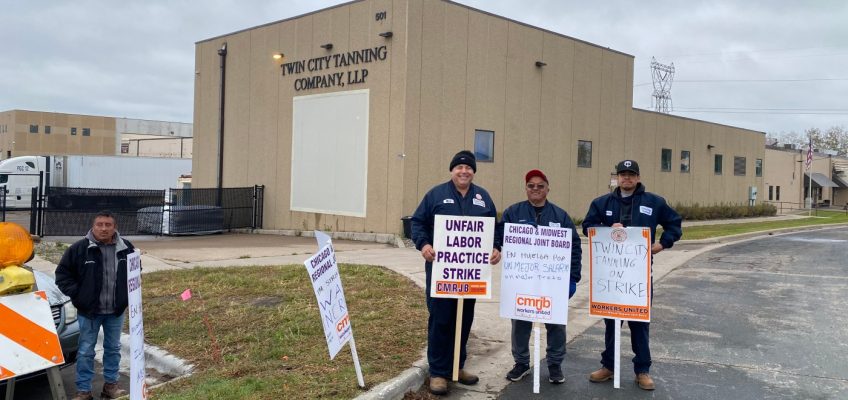A year after inheriting the remnants of planning for a long-stalled transit line down West Seventh Street, St. Paul officials have announced that a future bus rapid transit system likely will operate in regular traffic, rather than its own dedicated lane. Also, a full reconstruction of West Seventh Street with utility and pedestrian improvements isn’t likely in the near future.
Ramsey County abandoned planning for the “Riverview Corridor” streetcar a year ago. That left St. Paul to take the lead in a joint effort with Metro Transit and the Minnesota Department of Transportation on a wide range of long-delayed improvements for the lengthy state road, including a possible new bus line. Those efforts have been dealt another setback.
“It was going to require that all the levels of government could agree and bring funding to the table to make it all work, and it’s become clear that we’re not all in agreement,” said Russ Stark, St. Paul Mayor Melvin Carter’s chief resilience officer, on Wednesday.
“The thing that became clear is that Ramsey County no longer sees themselves as a significant funder of this corridor,” he added. “Now that they’re not, the other parties are needing to figure out how to make a lot of that investment still work.”
A Metro Transit bus heads west on West Seventh Street in St. Paul on Wednesday, Oct. 15, 2025. (John Autey / Pioneer Press)
Transit advocates took that news as a surprise blow to longstanding efforts to better connect downtown St. Paul to Minneapolis-St. Paul International Airport and the Mall of America in Bloomington through 12 miles of improved bus, bike and pedestrian access. Even minor road improvements appear years away.
“It’s kind of the typical finger-pointing that we see now for decades,” said Meg Duhr, president of the West Seventh/Fort Road Federation, on Wednesday. “At the end of the day, they’re all public agencies, and West Seventh residents, we pay city taxes, we pay county taxes, we pay state taxes. We need this done.”
“Seeing all the roads rehabbed around the city that were in much better conditions than West Seventh is now, it’s just such a colossal failure of our local governments,” Duhr added.
‘New West Seventh Corridor’
After Ramsey County pulled out of planning for the Riverview Corridor, the city unveiled the “New West Seventh Corridor” concept in early 2025.
Carter, in a video promotion, announced the city was working with MnDOT and Metro Transit to roll out a “generational investment in West Seventh Street … Residents will have new sidewalks, and a parallel bicycle and pedestrian trail that links West Seventh to our new Highland Bridge development.”
In addition to bus-only lanes and a guideway for a bus rapid transit system, the “coordinated corridor” concept called for a full road reconstruction, as well as the addition of a new regional multi-use bike and pedestrian trail along a Canadian Pacific rail spur in Highland Park.
Some project partners hoped for bus and pedestrian improvements to the West Seventh Street bridge over Interstate 35E.
City officials updated a corridor webpage this month, and later social media, to say those projects will not progress together, if they progress at all: “A coordinated corridor concept is no longer moving forward. Project partners were unable to reach agreement on a funding plan for this coordinated concept.”
A full reconstruction of West Seventh would require “hundreds of millions of dollars” in investment, Stark said. And, while West Seventh — also known as Minnesota Highway 5 — is technically a state road, the state has limited budget to take the lead in funding reconstruction of streets that do not sit within its freeway system.
Ramsey County has access to funding from a new regional sales tax, Stark noted.
Mill and overlay pushed to 2029
Ramsey County Commissioner Rafael Ortega, who chairs the county board, said Wednesday that the county could still contribute toward trees and safety improvements at certain intersections like Randolph Avenue, enhancing its connection to the Mississippi River. But with the county-driven streetcar project dead, the county has no interest, he said, in finding funding for a full road reconstruction.
“The road, it belongs to the state, and they’re responsible to do whatever they want to do with it,” said Ortega on Wednesday.
That doesn’t mean that all aspects of the corridor concept are dead. The Minnesota Department of Transportation is still planning a street resurfacing of West Seventh Street, which may be pushed back a year from starting in the fall of 2028 to beginning in the fall of 2029 and wrapping up in the summer of 2030, according to MnDOT project manager Michael Corbett.
That project will include mill-and-overlay treatment, replacing certain traffic signals and street work related to the Americans with Disabilities Act. It does not currently include underground utility work on water mains that in some cases date back to the 1870s.
“MnDOT is moving forward with plans, at the very least, to resurface the street and get it in better shape,” Stark said. “We’re hopeful it can be more than that and we can get fuller investment in West Seventh.”
Bus rapid transit
Metro Transit will continue to study the possibility of adding West Seventh to its growing network of “arterial” bus rapid transit corridors, which are limited-stop bus routes that operate in normal traffic but benefit from certain enhanced amenities, such as paying before boarding at modern stations with electronic signage.
If Metro Transit pursues arterial BRT along West Seventh, the earliest it likely would roll out is between 2030 and 2035. It has competition from other potential routes.
“West Seventh will be evaluated, along with 10 other corridors, to select three going forward — the J, K and L lines,” said Nick Thompson, deputy general manager of planning and capital programs for Metro Transit.
A recommendation to the Metropolitan Council could be ready by January, Thompson said.
Pedestrian improvements up in the air
The timeframe for some major road improvements that had been discussed and debated for years, if not a decade or more, remains up in the air. Among them — the prospect of widening the I-35E bridge for pedestrian access and bus-only lanes; the multi-use bike and pedestrian trail along the CP rail spur; utility work and utility replacements along West Seventh Street.
Also uncertain? Pedestrian improvements such as refuge islands, sidewalks, intersection simplifications and parking triangles. And the replacement of ash trees that MnDOT removed from West Seventh Street in 2018 and 2019.
“All of these setbacks are pushing things back further and further, and it seems like we’re getting less and less out of the project,” said Julia McColley, executive director of the West Seventh/Fort Road Federation.
Since at least the late 1990s, transit advocates have pressed Ramsey County and other partners for a dedicated bus, streetcar or light rail transitway down West Seventh Street from downtown St. Paul to MSP and the MOA.
Those plans have lived and died and been resurrected repeatedly. In 2002, state officials took back $40 million for corridor planning in light of community fears that dedicated lanes would eat up space for travel and parking.
Metro Transit later began lining up funding for a bus rapid transitway it hoped to roll out by 2016, but Ramsey County chose to take the lead instead, pushing ahead with discussions around a possible streetcar.
The long-proposed “Riverview Corridor” officially derailed in 2024, when the county declared the $2 billion streetcar project unable to sway key critics, including businessowners worried their storefronts would not survive construction. Members of the Metropolitan Airports Commission had raised red flags over a streetcar accessing the same track as the Blue Line light rail at MSP, as well as necessary road improvements approaching the airport.
Public discussion
State Rep. Dave Pinto and three other state lawmakers are scheduled to join the West Seventh/Fort Road Federation and Highland District Council for a public town hall discussion about the future of West Seventh Street.
The event will take place at 7 p.m. on Oct. 27. Residents are invited to RSVP for the location through the online calendar at fortroadfed.org.
Related Articles
Section of I-94 in St. Paul closed Friday-Monday for bridge replacement
Massive Duluth freeway project wrapping up this month
St. Paul’s mayoral candidates diverge on Summit Ave. bike trail
St. Paul: John Ireland Blvd. bridge to close Monday for repairs
First-ever statewide safety stand-down by MnDOT honors 2 workers




